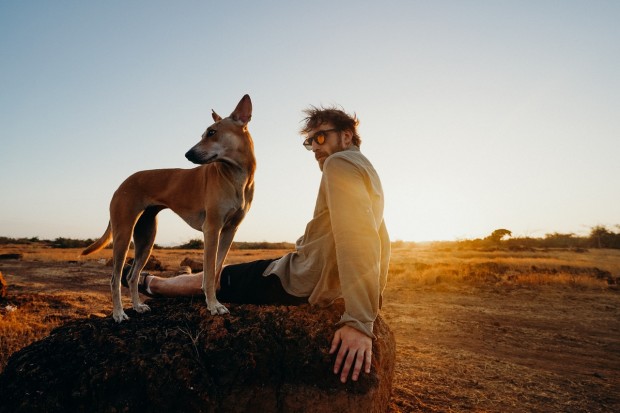
(Photo: Pexels)
Travelling with your dog not only strengthens the trust between you, but it is also an experience that needs to be lived to understand the joy it brings. Having new experiences with your dog, joyful or a little anxious, may always end up with beautiful memories. After all, no one likes the thought of leaving their pup behind for long periods of time.
Of course, as their owner, you're responsible for making their journey just as comfortable as yours. However, if your buddy is nervous about flying, there are some things that you can do to ease their anxiety. We're talking about flying in the cabin of the plane, never the cargo area. Being down below is a terrifying and potentially dangerous situation for your dog, so avoid that at all costs!
So, with that being said, let's look at the five ways of helping your dog overcome fear of flying.
Recognize the Signs of Stress
As a loving and responsible human friend, you need to notice when your buddy is stressed out. They may show some symptoms of anxiety along the way. The most obvious signs would be crying and shivering when they feel uncomfortable, but you should be careful about the excessive licking, too. They sometimes yawn excessively also when they feel uneasy. You may observe them pacing back and forth in an area beside constant shaking as if they are wet. Some dogs don't even make a peep and prefer to huddle in the corner until the experience is over.
Knowing these ticks and how to comfort your dog is crucial to an enjoyable travelling experience (for you and those around you too!). Have treats nearby, speak softly to them, and pet them when you can. Make them know that you're close to them and they're safe. That should help them calm down once the initial shock of the new experience fades.
Reducing Physical Stress with Braces
If your dog is older or has had an ACL injury in the past, it's likely that the hours of being confined in a crate, paired with the stress of a new situation, will flair up their discomfort. A full neoprene dog ACL brace can help relieve their discomfort. These types of braces are designed like a compression sleeve - they support your dog's leg while discouraging unnatural movements or positions.
They have no metal, so going through TSA and airports will be a breeze. Your dog will thank you for it too! Just make sure they're used to wearing their brace for longer periods before trying to fly with it on.
Bring Familiar Objects and Treats
You don't want to overpack, but bringing a couple of your dog's favorite toys, their blankie, and their treats will help them relax and it will help your final destination feel more like home.
Treats will also be quite enjoyable as a reward for your furry buddy when they feel better. However, we need to remind you that you should not give salty ones to your pup during a flight to avoid dehydrating them. Remember, the more water they will need to drink, the more often they need to pee! And trust us, you do not want to have to deal with an accident on a plane. So make sure your dog goes before the flight and have puppy pads handy on the bottom of the crate!
A Comfy Carrier is Important
During long flights, your furry companion may have to stay in the carrier. You may want to have your furry friend get used to the carrier before you guys hit the road. You can allow them to get in the carrier from time to time and give them treats while they are in it.
Before leaving the house, let them go in by themselves. If you don't force them, this can be a healthy relationship that suggests that the buddy can be peaceful and comfortable in the carrier. You can also place their favorite toy or treat in the carrier.
Airports also have carrier restrictions, so make sure yours fits the bill!
Aromatherapy Can Help
Dog trainer Cesar Millan believes aromatherapy can be helpful for calming the furry companions when they show some stress signals. You can place lavender oil on your hands every time before you go for a walk together, go to the park and before food and let them pick up the scent.
You can rub them to feel love with the scent. They will associate the scent with pleasant moments. If you use the scent as frequently as possible especially in the days near to the flight, you can let them pick up scent again during flight when they feel anxious. It will say to them it is alright and make them feel relaxed.
Your Mood Matters
Sometimes your fear of flying or stress about travelling may trigger fear in your dog companions. When you are nervous, your buddy will feel it too. Dogs are very empathetic animals and are their happiest when their owner is happy and calm. They rely on you, so you need to be your best for them during stressful times.
Therefore talk to them in a positive tone, address them only when you need to address them (to make them feel less antsy), and give them plenty of rewards when you're waiting to take off. We also recommend, if you can afford it, to purchase the seat directly next to you as well. This will give you and your dog more room and neither of you have to be antsy about the stranger sitting next to you.
Those are our tips. We hope they helped you prepare for flying with your dog. Before you plan anything, remember to always check airline breed and crate restrictions! And above all else, enjoy your vacation!
This article is copyrighted by Travelers Today, the travel news leader



